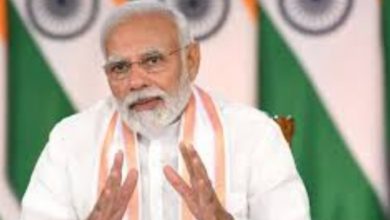Covid lockdowns revive the ghosts of a planned economy

Yang Wenhui should be a proud example of China’s rise from economic rubble to global powerhouse.
Growing up poor, he ate so much cabbage that he did not touch it again for many years. He worked as a farmer and a construction worker before joining the country’s nascent logics industry. In 2003, he started his own freight logics company, striking gold as online shopping took off in the 2010s and products moved swiftly between provinces.
Then the omicron variant started spreading in China. In the government’s zealous pursuit of its “zero-COVID” policy, dozens of cities along the 1,300 miles of highway between the capital, Beijing, and the southern province of Guangdong, his main freight route, imposed travel restrictions and lockdowns. Many truckers were grounded. Cargo prices rose 20% in a matter of weeks.
“I’ve been in the logics business for 28 years,” Yang, 47, said. “But I’ve never seen a mess like this. There were numerous emergencies to deal with.”
He estimates that he lost tens of thousands of dollars in March.
China’s economy is a giant, sophicated machine that requires numerous parts to work together. Behind its 1.4 billion consumers are 150 million regered businesses that provide jobs, food and everything that keeps the machine humming.
Now, in the name of pandemic control, the Chinese government is meddling with the economy in ways that the country has not seen for decades, wreaking havoc on business.
Businesspeople worry that the country is going back to a planned economy, and the great COVID disruptions could last until after a Commun Party congress late this year when China’s top leader, Xi Jinping, is expected to secure a third term. A surge in cases in Beijing is amplifying global fears as well, prompting a sell-off in stocks on concerns that China’s economy could take another hit.
In the past two years, many governments around the world have sought a balance between controlling the pandemic and keeping businesses open. China was largely successful until recently when omicron, a milder, if more infectious, variant, caused a serious outbreak. As much of the world is opening up, the country is doubling down on its zero-COVID policy, making low death and infection rates central to its legitimacy.
Since March, China has reported about half a million COVID infections and 48 deaths through April 22.
Around 344 million people, or a quarter of the country’s population, are under some kind of lockdown, according to investment bank Nomura. The lockdowns have left China’s biggest city, Shanghai, a metropolis of 25 million people, a ghost town; farmers in the northeastern granary cooped up in the spring planting season; and many factories, shops and restaurants across the country suspending their operations.
The stringent measures are exacting a heavy toll on the economy. Nationwide consumption fell 3.5% in March, while spending at restaurants plummeted 16%, according to official data.
“This is not only making it impossible for many private businesses to survive, but also accelerating outbound immigration and quickly dampening willingness to invest,” said Zhiwu Chen, an econom at the University of Hong Kong. “Once people lose confidence in the country’s future, it will be extremely difficult for the economy to recover from the zero-COVID policy’s impact.”
Business owners and managers are complaining that the current disruptions are worse and more widespread than those of early 2020 when logics, commerce and industrial production in much of the country quickly returned to normal. Back then, the government’s digital surveillance systems to limit the movements of vehicles and people were less extensive.
The business community is waiting nervously to see if the government will apply the Shanghai lockdown model to other cities. The approach has a strong element of a planned economy, in which the government controls business activities, rather than letting the market regulate supply and demand.
During the outbreak, the Shanghai government upended the commercial systems and tried to provide for 25 million people on its own. The results are familiar to Chinese of a certain age: scarcity of supplies and mushrooming of black markets.
Because of COVID restrictions, commercial trucks have a hard time delivering food and household goods to Shanghai. Inside the city, only vehicles with passes are allowed on the road.
On the black market, some operators are willing to pay $2,000 for a day pass. The cost is then priced into the groceries they sell to the residents.
Some neighborhood committees allow only government-organized grocery dributions; others do not allow their residents to purchase diapers, ba formula and toilet paper because they are not considered necessities. Elsewhere, fruit, beer and coffee are considered frivolous items.
Starting in the 1980s, China moved away from its planned economy because it left everyone poor. It did not work in the former Soviet Union nor is it working in North Korea.
John Ji, a real estate developer in Nanjing of Jiangsu province, is anxiously watching the lockdowns in Shanghai and other cities. He believes many people will lose their jobs and have difficulty paying mortgages. When nobody can afford housing, he asked, who will buy his apartments?
Ji also grew up poor. Before he turned 10, his staple was sweet potatoes. He ate meat only a couple of times a year.
“I’m worried whether we’re going back to a planned economy,” he told me. “If the economy keeps slumping, we might become poor again.”





